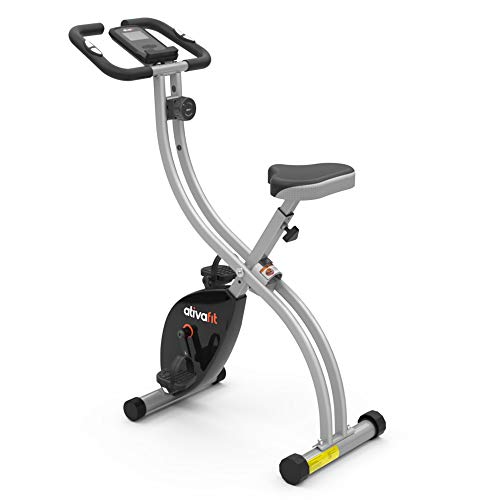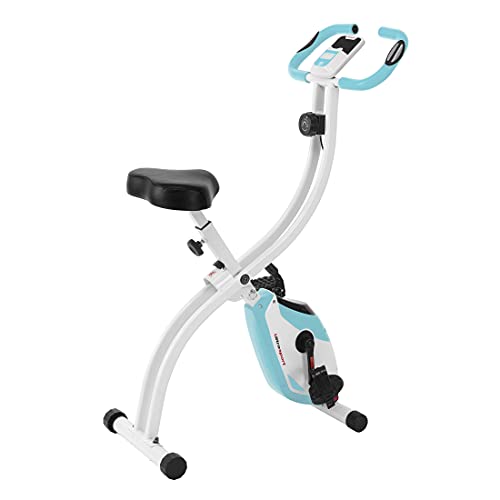Guide To Exercise Cycle For Home: The Intermediate Guide To Exercise C…

Pat
2025-03-03 11:26
4
0
본문
 The Ultimate Guide to Creating an Effective Exercise Cycle for Home
The Ultimate Guide to Creating an Effective Exercise Cycle for HomeIn the hectic world these days, maintaining a healthy way of life has actually ended up being more crucial than ever. For lots of, the appeal of a home gym setup is tempting, offering the benefit required to fit exercises into hectic schedules. Amongst the numerous exercise equipment readily available, a stationary exercise bike stands out as a flexible and efficient tool for home physical fitness. This post explores the benefits of utilizing an exercise bike in your home, how to pick the best one, and supplies a comprehensive guide to developing a well-rounded exercise cycle routine that can be easily incorporated into life.
 The Benefits of Home Cycling
The Benefits of Home CyclingCycling in the house offers various advantages over traditional health club setups or outdoor biking. Here are some key benefits:
Convenience: No need to travel to a gym, saving time and energy.
Weather Condition Independence: Exercise no matter outside conditions.
Flexibility: Customize your workout to fit your schedule and physical fitness goals.
Low Impact: Gentle on joints, making it ideal for any ages and physical fitness levels.
Cardiovascular Benefits: Improve heart health and increase endurance.
Mental Health: Reduces stress and improves mood through routine physical activity.
Calorie Burning: Effective for weight loss and management.
Selecting the Right Exercise Bike
Selecting the proper stationary bicycle is crucial to guarantee a comfortable and efficient exercise experience. Here are some aspects to think about:
Kind of Bike
Upright Bike: Resembles a traditional road bike and offers a more extreme workout.
Recumbent Bike: Provides back assistance and is ideal for those with neck and back pain or mobility concerns.
Spin Bike: Designed for high-intensity period training (HIIT) and uses a more dynamic exercise.
Resistance Mechanism
Magnetic Resistance: Smooth and quiet, enabling for accurate resistance adjustments.
Fricton Resistance: Less pricey however can be loud and less accurate.
Air Resistance: Uses a fan to develop resistance, providing a natural cycling feel.
Adjustability
Seat and Handlebar: Ensure they can be adjusted to fit your body comfortably.
Resistance Levels: Look for a bike with a vast array of resistance settings.
Additional Features
Heart Rate Monitor: Helps track physical fitness progress.
LCD Display: Provides workout information like speed, range, and calories burned.
Built-in Workouts: Pre-programmed routines for variety and convenience.
Budget
Cost Range: Determine your budget plan and try to find bikes that offer the very best worth for your money.
Setting Up Your Home Gym
Creating a devoted area for your stationary bicycle can significantly enhance your workout experience. Here are some tips:
Place
Quiet Area: Choose a space where you can exercise cycle for home without distractions.
Well-Ventilated: Ensure the area is well-ventilated to remain comfortable throughout intense sessions.
Flooring
Non-Slip Mats: Use non-slip mats to avoid the bike exercise home from moving and to safeguard the flooring.
Cushioning: Consider a cushioned mat to lower joint effect.
Equipment
Bike Stand: For upright bikes, a stand can support the bike.
Water Bottle Holder: Stay hydrated with a holder within easy reach.
Towel Rack: Keep a towel close by to wipe away sweat.
Home entertainment
Television or Tablet: Mount a screen to enjoy exercises or home entertainment throughout your sessions.
Speakers: Connect a pair of speakers to take pleasure in music or podcasts.
Developing a Home Cycling Routine
A well-structured cycling regimen can assist you achieve your physical fitness objectives effectively. Here's a step-by-step guide to producing a reliable home biking workout:
Warm-Up (5-10 minutes).
Low Resistance: Start with a mild trip to heat up your muscles.
Dynamic Stretches: Include leg swings, hip circles, and arm circles to increase versatility.
Main Workout (20-60 minutes).
Steady-State Cycling: Maintain a moderate speed and resistance for a sustained cardio workout.
Interval Training: Alternate between high-intensity sprints and low-intensity healing periods for a more difficult session.
Hill Climbs: Increase resistance to mimic riding uphill, appealing various muscle groups.
Resistance Training: Use the bike's resistance to construct muscle strength, concentrating on leg and core muscles.
Cool off (5-10 minutes).
Low Resistance: Gradually decrease strength to cool down your heart rate.
Static Stretches: Hold stretches for 15-30 seconds to improve flexibility and reduce muscle pain.
Frequency and Duration.
Beginners: Aim for 2-3 sessions per week, each lasting 20-30 minutes.
Intermediate: Increase to 3-4 sessions per week, 30-45 minutes per session.
Advanced: Aim for 4-5 sessions weekly, 45-60 minutes per session.
Sample Home Cycling Workouts.
Here are 2 sample workouts to get you started:.
Newbie Steady-State Workout.
Warm-Up: 5 minutes at low resistance.
Main Workout: 20 minutes at moderate resistance.
Cool Down: 5 minutes at low resistance.
Total Duration: 30 minutes.
Intermediate Interval Training Workout.
Warm-Up: 10 minutes at low resistance.
Main Workout: 30 minutes alternating 1 minute of high resistance with 2 minutes of low resistance.
Cool off: 10 minutes at low resistance.
Total Duration: 50 minutes.
FAQs.
Q: Can I utilize a stationary bicycle if I have knee issues? A: Yes, biking is a low-impact activity that can be mild on the knees. Nevertheless, it's crucial to adjust the seat and handlebars to ensure appropriate posture and alignment to prevent pressure.
Q: How frequently should I clean my exercise bike? A: It's suggested to clean your exercise bike after each use to keep health and avoid rust. Utilize a wet cloth to clean down the seat, handlebars, and frame. For much deeper cleansing, describe the producer's standards.
Q: Can I utilize a stationary bicycle for weight-loss? A: Absolutely! Biking burns calories and can be an efficient part of a weight-loss strategy. Combine it with a balanced diet plan and other forms of exercise for optimal outcomes.
Q: Exercise Cycle for Home Do I require special clothes to use an exercise bike? A: While not strictly needed, using comfy, moisture-wicking clothes can enhance your exercise experience. Biking shorts and a moisture-wicking top are good choices.
Q: Can I use my exercise bike for strength training? A: Yes, by using greater resistance levels, you can engage your leg and core muscles, building strength and endurance. Incorporate resistance training into your regimen for a more thorough workout.
Conclusion.
An exercise bike is a valuable addition to any home fitness center, providing a series of advantages from convenience to low-impact workouts. By selecting the ideal bike, establishing a comfortable area, and following a structured regimen, you can achieve your physical fitness goals and preserve a healthy lifestyle from the comfort of your home. Whether you're a novice or a sophisticated cyclist, there's a workout strategy that can assist you reach your goals and delight in the lots of advantages of home biking.
Extra Tips.
Stay Motivated: Set achievable goals and track your development.
Mix It Up: Vary your workouts to avoid plateaus and keep things intriguing.
Stay Safe: Always warm up and cool down to prevent injuries.
Speak with a Professional: If you have any health concerns, consult a fitness expert or healthcare service provider before beginning a brand-new Exercise bicycles For sale regimen.
By following these guidelines, you can develop a gratifying and effective home cycling regimen that fits perfectly into your daily life. Pleased biking!

댓글목록0
댓글 포인트 안내